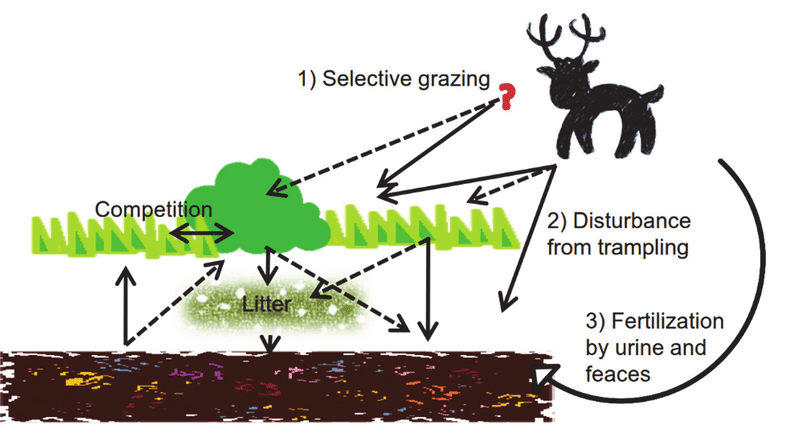The Fight for Life: Dynamics of Competition Between Herbivores and Plants
Competition is a fundamental aspect of life, and it occurs in various forms and among different organisms. One of the most fascinating and complex forms of competition is the interaction between herbivores and plants. This dynamic relationship has shaped ecosystems for millions of years, with each side constantly adapting and evolving to gain an advantage.
The Battle Begins: Herbivores vs. Plants
Herbivores, such as insects, mammals, and birds, rely on plants as their primary source of food. They have developed various strategies to overcome the defenses of plants and obtain the nutrients they need. On the other hand, plants have evolved an array of mechanisms to deter herbivory and protect their valuable resources.
One of the most common defenses employed by plants is the production of chemical compounds. These compounds can be toxic or unpalatable to herbivores, effectively deterring them from feeding. Some plants even release volatile chemicals that attract predators of herbivores, creating a natural defense system.
However, herbivores are not easily deterred. They have evolved mechanisms to counteract plant defenses. For example, some insects have developed detoxification enzymes that neutralize plant toxins, allowing them to feed on otherwise toxic plants. Others have specialized mouthparts or digestive systems that enable them to overcome physical barriers, such as tough leaves or spines.
The Constant Arms Race
The interaction between herbivores and plants can be described as an ongoing arms race. As plants develop new defense mechanisms, herbivores evolve strategies to overcome them. This continuous cycle of adaptation and counter-adaptation drives the evolution of both herbivores and plants.
One example of this arms race is the coevolution between plants and insects. Some insects have developed a close relationship with specific plant species, relying on them for food and shelter. In response, these plants have evolved specialized structures or chemical compounds that attract and benefit these insects. This mutualistic relationship demonstrates the intricate nature of the competition between herbivores and plants.
Another aspect of this arms race is the concept of plant tolerance. Some plants have evolved the ability to tolerate herbivory without suffering significant damage. They can quickly regrow damaged tissues or allocate resources to areas that are not being consumed. This tolerance allows the plant to survive and reproduce despite herbivore pressure.
The Implications for Ecosystems
The competition between herbivores and plants has profound implications for ecosystems. It affects the distribution and abundance of both herbivores and plants, shaping the structure and dynamics of communities.
For example, when herbivores consume certain plant species more than others, it can lead to changes in plant community composition. This, in turn, can impact other organisms that rely on those plants for food or habitat. The loss or decline of a particular plant species due to herbivory can have cascading effects throughout the ecosystem.
Additionally, the presence of herbivores can influence the productivity and diversity of plant communities. By selectively feeding on certain plants, herbivores can create opportunities for other plant species to thrive. This can result in a more diverse and resilient ecosystem.
Conclusion
The competition between herbivores and plants is a fascinating and complex phenomenon. It drives the evolution of both herbivores and plants, leading to an ongoing arms race. This dynamic interaction has far-reaching implications for ecosystems, shaping the structure and dynamics of communities. Understanding the dynamics of this competition is crucial for conservation efforts and maintaining the delicate balance of nature.
